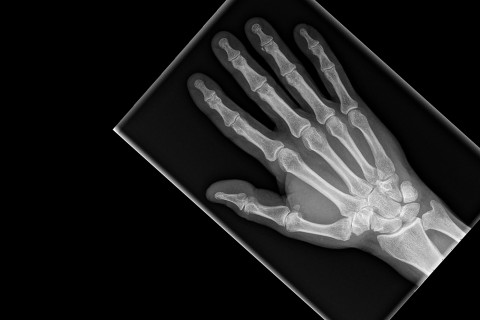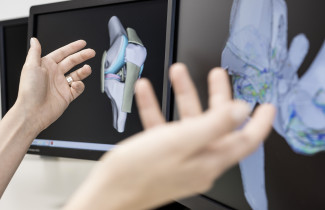Knee joint injuries, such as ligament rupture, are common in athletes. As the intact joint ligaments offer a precondition for joint stability, ligament injuries are often surgically reconstructed. However, in many cases these injuries or surgeries can lead to post-traumatic osteoarthritis. The articular cartilage, which serves to provide frictionless contact between bones, wears out completely, causing severe joint pain, lack of mobility and even social isolation. Currently, preventing the onset and development of osteoarthritis is still the best clinical course of action. Computational modelling can be used to predict locations susceptible to osteoarthritis; however, they are too complicated for clinical use and lack verification of predictions.
Researchers from the University of Eastern Finland, in collaboration with the University of California in San Francisco, Cleveland Clinic, the University of Queensland, the University of Oulu and Kuopio University Hospital, have developed a method to predict post-traumatic osteoarthritis in patients with ligament ruptures using a simplified computational model. The researchers also verified the model predictions against measured structural and compositional changes in the knee joint between follow-up times. The findings were reported in Clinical Biomechanics.
In this proof-of-concept study, computational models were generated from patient clinical magnetic resonance images and measured motion. Articular cartilage was assumed to degenerate due to excessive tissue stresses, leading to collagen fibril degeneration, or excessive deformations, causing proteoglycan loss. These predictions were then compared against changes in MRI-specific parameters linked to each degeneration mechanism.
“Our results suggest that a relatively simple finite element model, in terms of geometry, motion and materials, can identify areas susceptible to osteoarthritis, in line with measured changes in the knee joint from MRI. Such methods would be particularly useful in assessing the effect of surgical interventions or in evaluating non-surgical management options for avoiding or delaying osteoarthritis onset and/or progression,” Researcher Paul Bolcos, a PhD student at the University of Eastern Finland, says.
The findings are significant and could provide pathways for patient-specific clinical evaluation of osteoarthritis risks and reveal optimal and individual rehabilitation protocols.
“We are currently working on adding more patients in order to help tune the degeneration parameters and ensure the sensitivity of the mechanical to MRI parameters. Later, this method could be combined with a fully automated approach for generating these computational models developed in our group, narrowing the gap between research and clinical application,” Bolcos continues.
The study has received funding from the European Research Council (ERC) under the European Union’s Horizon 2020 research and innovation programme (Grant: 755037), the Doctoral Programme in Science, Technology and Computing from University of Eastern Finland, the Academy of Finland (Grants 285909, 286526 and 307932) and National Institutes of Health (NIH/NIAMS P50 AR060752).
For further information, please contact:
PhD student Paul O. Bolcos, tel. +358 45 2290653, paul.bolcos (a) uef.fi
Professor Rami Korhonen, tel. +358 40 355 3260, rami.korhonen (a) uef.fi
Original article:
Paul O. Bolcos, Mika E. Mononen, Matthew S. Tanaka, Mingrui Yang, Juha-Sampo Suomalainen, Mikko J. Nissi, Juha Töyräs, Benjamin Ma, Xiaojuan Li & Rami K. Korhonen
Identification of locations susceptible to osteoarthritis in patients with anterior cruciate ligament reconstruction: Combining knee joint computational modelling with follow-up T1ρ and T2 imaging. Clinical Biomechanics (2019). DOI: 10.1016/j.clinbiomech.2019.08.004.
A pre-proof version of the article is available for download at: https://www.clinbiomech.com/article/S0268-0033(18)31029-5/fulltext



